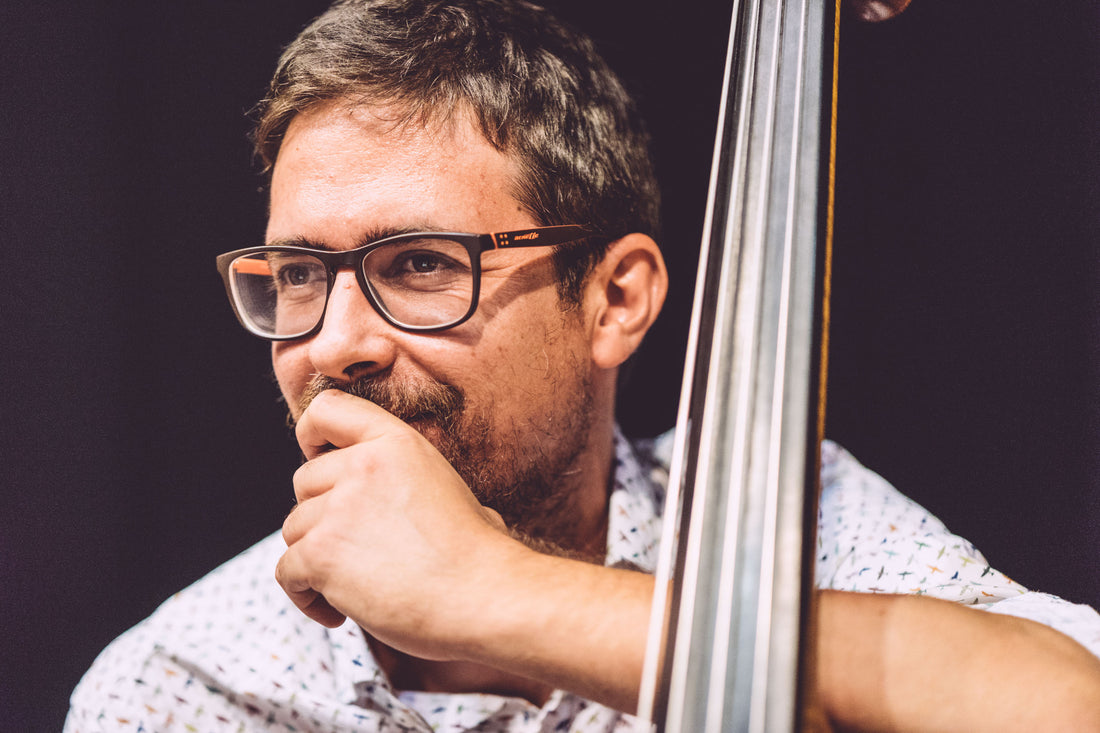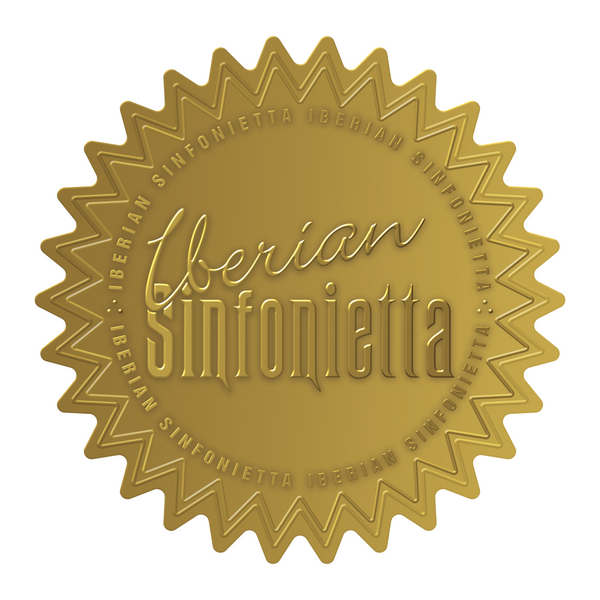
GETTING TO KNOW IBERIAN SINFONIETTA: JAVIER TUÑÓN AGUADO
Next Saturday, May 20 , will be the last concert of this Iberian Sinfonietta season. We will return in September, but in the middle, the summer stop.
We reach this end of the course with the peace of mind of having done things well, of having grown and of consolidating an increasingly interesting, diverse and generous programming. Interesting because the programming is populated by essential names from the history of music and many other less known ones, not to mention the number of absolute premieres that there have been this year. Diverse because within a project around classical or academic music, it is shown that there are many stylistic differences, and all of them fit into the Iberian Sinfonietta concerts. And finally, generous, because there are many directions in which the project grows, more relationships with conservatories, with the media and specialized magazines, with composers' associations, with institutions, etc.
Within these lines of work is the recently created line of publications “Getting to know Iberian Sinfonietta”, in which little by little, dear public, you can get closer to each of the components of this project. Today we will dedicate this space to one of the musicians recognizable by the entire audience, identifiable by the great instrument he plays, and because he is usually alone in front of the section, it is Javier Tuñon Aguado , the double bassist, we talked with him.

How do you feel about Iberian Sinfonietta and what work do you do?
The first answer that comes to mind is “like at home.” The Iberian Sinfonietta has become a common place, truly familiar, for the musicians who make it up. Since it began its journey, back in 2019, the artistic project devised and led by our director, Juan Paulo Gómez , has been consolidating, and today it could be said that the bimonthly appointments at the Peace Palace are marked in red on the calendar, not only for the musicians who are part of the orchestra, but also for our entire audience. Personally, I can consider myself lucky to have the trust of Juan Paulo Gómez , a tireless promoter and disseminator of music whom I have known for many years, and with whom I have been lucky enough to participate in numerous chamber music and symphonic projects.
My work in the orchestra, with which I have participated since its foundation, is the usual work of the double bassist in groups with a limited number of musicians. My main responsibility is to lead the harmonic support of the ensemble and contribute to its rhythmic stability.
Normally you are alone and therefore all the responsibility lies with you, how do you handle that?
Being the only member of my instrument in the orchestra has different interpretations. On the one hand, it is true that the responsibility falls on me to respond to the interpretive requirements of the composers, as well as to the director's instructions. Above all, I would highlight the importance of knowing how to weigh aspects such as dynamics, since the sound volume of the interventions I make is the final result of my voice that reaches both my colleagues and the public. In this sense, I always keep in mind that the sound of the orchestra is built from the bass. I agree here with the words that Patrick Süskind dedicated in his book The Double Bass to the role of my instrument in the orchestra: “disregard the bass and the most absolute Babylonian confusion of languages will reign, a Sodom where no one knows why they make music.” On the other hand, we must not lose sight of the fact that the orchestra is an ecosystem, where all the instruments are interconnected, as is the case with living beings in the natural environment. What is truly important is the relationship and balanced dialogue between everyone, and this means that the "I" is relegated to the background, giving the spotlight to "we."

Tell us about yourself and your career
My path in music started a few years ago. Well, many already (laughs). Looking back is almost dizzying, but I imagine it is a good sign, indicative, I want to think, that we know a little more every time. I still see myself as the child who went to his first double bass classes in Huesca and Zaragoza, with an enormous curiosity to discover a new language and share experiences with other young people who shared my concerns. Fortunately, I can only say good things about having decided to take that first step. Then others have come, which have taken me to live in cities like Madrid and Barcelona, to receive musical advice from top-level double bassists, to meet colleagues from whom I have often learned a lot and with some of whom I have forged a relationship. of sincere friendship, and to travel to places in the national and international geography, taking courses and giving concerts. Among them, I have special memories of tours with young orchestras in countries like Russia or Brazil, thanks to which I have known places that perhaps I would not have been able to visit otherwise.
Regarding my professional career, I have had the opportunity to collaborate with orchestras such as the Spanish Radio Television Orchestra or the Castilla y León Symphony Orchestra, among others, and as a teacher, I have taught in several autonomous communities. Currently, I am a professor at the “Costa del Sol” Professional Conservatory of Music in Fuengirola.
In May, the last concert of the season, what assessment do you make of this year's Iberian Sinfonietta?
It seems to me that this season can be described as the consolidation of our project. As I said before, the orchestra has not stopped growing in these four years, but I consider that this year has had a special meaning for several reasons, of which I would highlight three. The first is that we have strengthened our ties with contemporary composers and young performing talents, thanks to the collaboration agreement with ACIM, Association of Composers and Performers of Malaga . As a result, we have brought more current sounds to the stage and accompanied musicians with an outstanding level and an enormous projection for the future. The second, I think we have offered an attractive musical offering, with a very wide spectrum. And to the programming of works with a more markedly chamber profile, common in the past, we have added the proposal of compositions with a more symphonic tone. Thinking back, and at the risk of leaving someone out, I think that not all orchestras with our number of musicians can say that they have performed representative works by Mozart, Beethoven, Saint-Saëns, Dvorak, Elgar, Tchaikovsky, Mahler or Wagner, in the same season. . The third reason is that the orchestra already has hallmarks recognizable by our audience, both physical and virtual. When the public attends a concert, they know that they are going to enjoy a complete artistic experience, through which they can travel to the context in which each work was conceived and created through the informative presentation of Jorge Rodríguez Morata , our pedagogical content coordinator , and when you go to social networks you can watch our performances, thanks to the desire we have to disseminate the work done and to bring these performances closer to those who have not been able to attend or wish to listen to us again.
Iberian Sinfonietta says goodbye with "Praga" and "Suite Pulcinella", a personal assessment of both as a double bassist
In Iberian concerts, the programmed works often have a link to each other, no matter how distant in time or space their creation may be. In this case, the link is that both works wanted to leave their time frame, to move to other periods.
In the case of Mozart's Symphony No. 38 "Prague", one of the last symphonies of the Austrian genius, it stands out for its emancipation from Haydn's inheritance and for its great ascendancy over Beethoven. In the case of Stravinsky's "Suite Pulcinella", from the 20th century, the journey undertaken by its author is towards the past, since the work falls within the so-called Neoclassicism and is inspired by the Italian Baroque.
As a double bassist, both works are challenging. The first, due to the clarity of lines and squareness characteristic of Mozart, which, with a technique of unmatched mastery and a beauty of sound within the reach of only geniuses, makes an interpretation of great clarity and precision necessary. The second is a work in which the double bass takes on a more present role than usual, due to the concerting nature that prevails in the adaptation of the ballet. In addition, there is a number where he has a famous humorous solo with the trombone. This, very unusual, will give the public the opportunity to hear my instrument in the starring role.

What musical moment are you in?
Combining my pedagogical work with the interpretive side makes me feel fulfilled and happy. I believe that for a teacher to be complete he must maintain a regular activity as a concert performer. Likewise, performance as a teacher is very enriching to renew instrumental competence, because students always give new and fresh points of view, which help foster a healthy growth mentality and maintain enriching feedback.
My current musical moment is very satisfying, because, luckily, I really enjoy what I do. Furthermore, I am open to new challenges, among them learning new instruments such as the viola da gamba, to which I have recently dedicated part of my time to the study.
Something that remains in our minds...
Nothing else. Just from here, I would like to send my thanks to the people who have followed us since we started this project and also to all those who have joined our great little family. An affectionate greeting, and we look forward to seeing you in May to say goodbye to the season.
Jorge Rodríguez Morata
Pedagogical content coordinator
